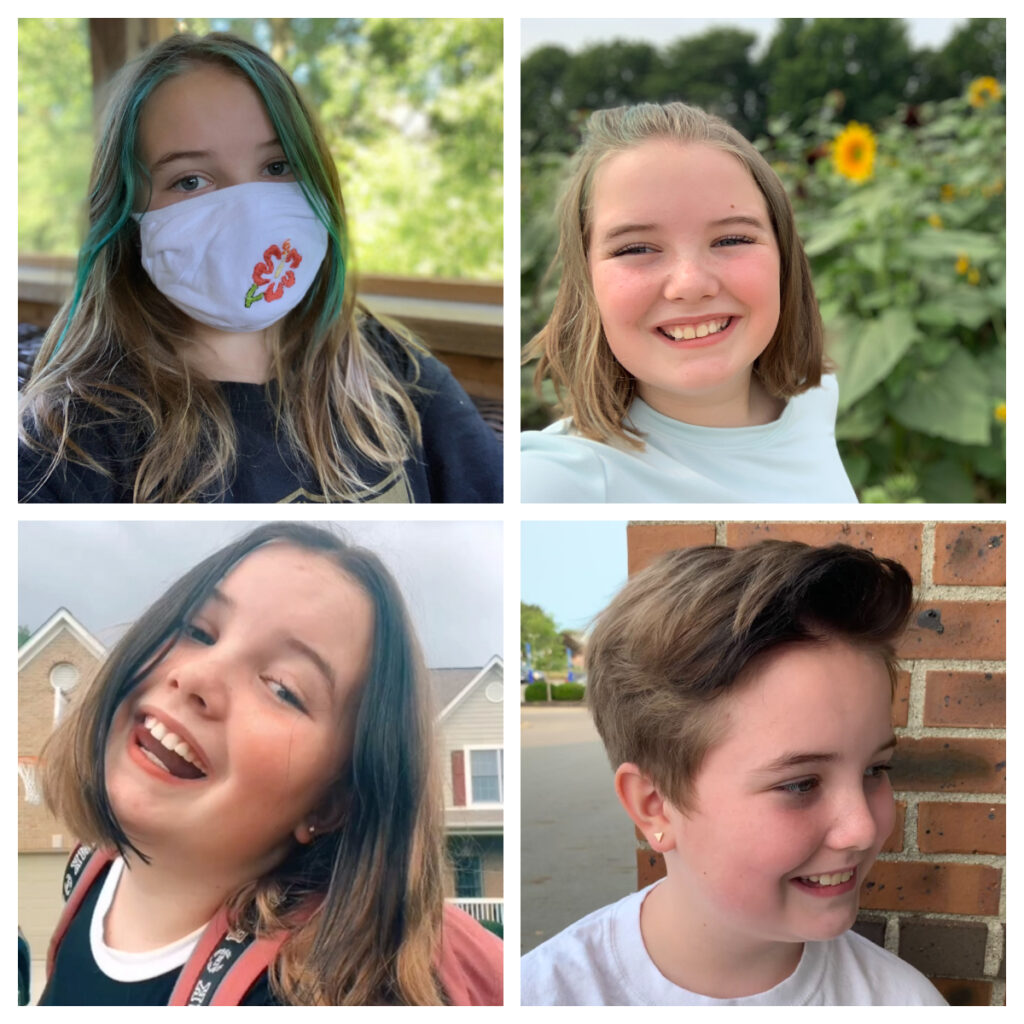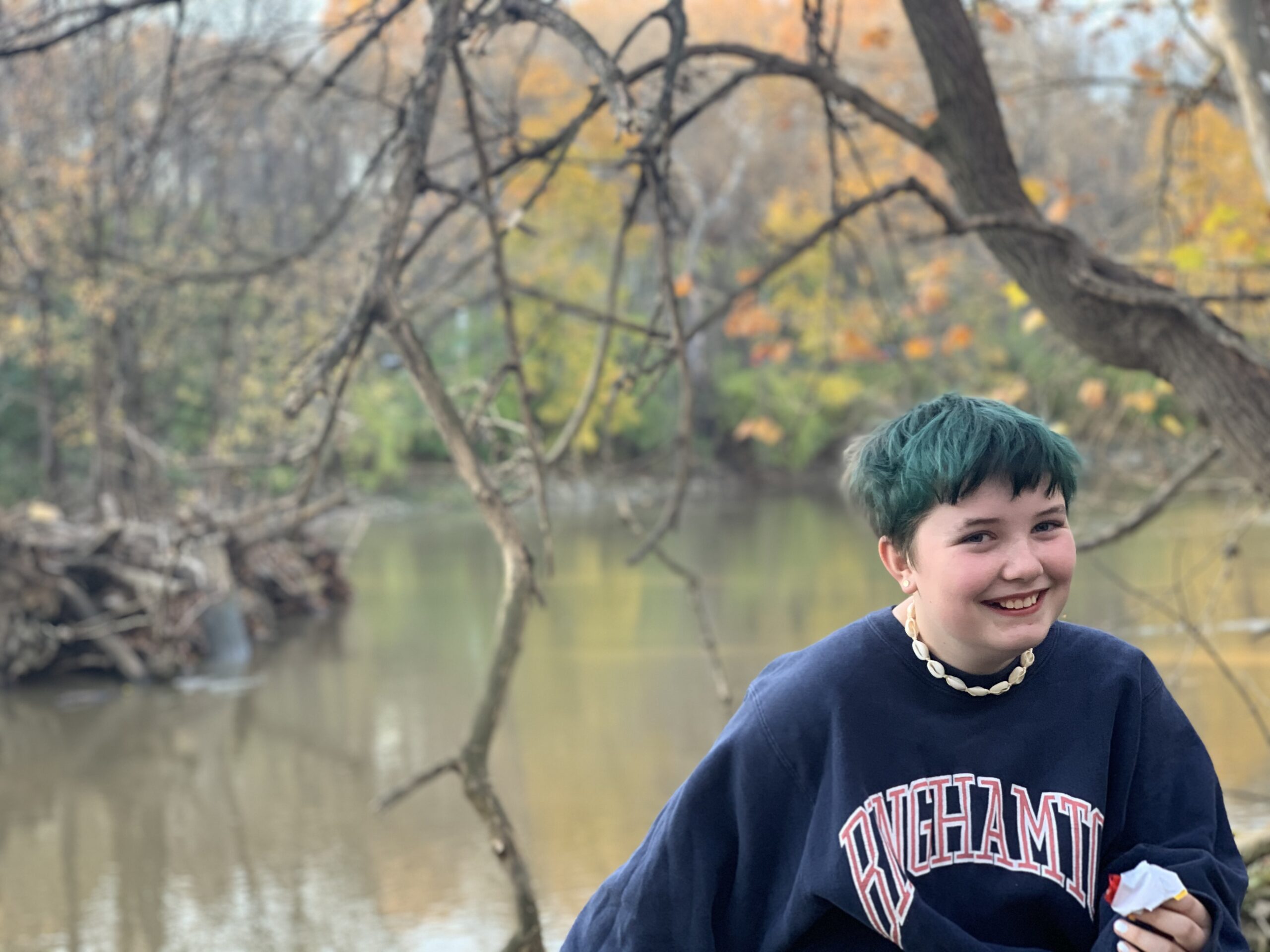
Our beautiful, amazing daughter has served up many epic looks and styles in her young life. Heck, even just in this past year alone, as evidenced by the photo at left.
Z has had long, flowing, blonde princess hair, super short pixie cuts and everything in between.
Being a creative soul, she has also experimented with hair color. We’ve dyed the front pieces black, a few chunks purple, the whole of her hair blue and the tips of her hair red.
Hairstyles and hair color are fluid in our house, like the use or non-use of makeup – they are simply another form of self-expression and creativity.
In years past when she had super short hair, Z still dressed in a feminine, girly manner. People could easily tell she was a little girl despite the lack of a stereotypically feminine hairstyle.
But in this current season, several circumstances are converging to result in her being misgendered or assumed to be a boy. It happens constantly, these days – like almost every time we leave the house. And it bugs me.
Girls can dress and look any way they want – any way that makes them feel good. They should not be treated differently because of it.
Thankfully, being misgendered as a boy never seems to upset Z at all. She typically laughs it off and never says or does anything to correct the person making the wrong assumption. On occasion, she doesn’t even notice (or at least she says she didn’t notice – I have a hard time believing my astute, highly sensitive child ever misses a thing).
I think the reason this keeps happening is a combination of #1 her short hair and its faded blue color; #2 her considerable height; and #3 her current style of dress, which is typically comfortable joggers, t-shirts and hoodies in dark or primary colors.
Thus far, I have been following Z’s lead and not correcting people when the misgendering happens. Usually, it’s just once, like if we’re in a grocery store checkout line, so there’s not really an opportunity to continue a conversation and correct the person.
Often it’s an older person, in which case I can’t really fault them for having an outdated way of thinking about “blue = boy, pink = girl.”
But most recently, it was a college student who was taking our photos and it happened repeatedly. I was so on edge and anxious that it would upset Z. He kept calling her “Handsome” and “Buddy” as he got her to pose.
I felt so uncomfortable, I was about to jump out of my skin. I didn’t have a way to pause and check in with her to ask if she wanted me to correct the photographer – and I didn’t want to embarrass her if she preferred to just ignore it. She continued to pose, laugh and have a blast.
So, I did what I could – I called her by name repeatedly and used “she” and “her” several times referring to Z. It didn’t make a whit of difference. The photographer just had it in his mind that he was photographing a boy, and nothing I said seemed to change that.
During the shoot, I tried to look at Z objectively to see what this photographer was seeing. She was wearing an adorable navy blue silk PJ set that we got as a hand-me-down from her Thai sister, Napa. She had sparkly earrings in both her ears. She had mascara on, really making her incredible eyes pop. She has a beautiful, feminine face, an outgoing personality and star quality for miles. If the photographer truly thought she was a boy, he must have thought she was an outrageously fabulous one!
And let me be clear: if Z told us she’s transgender and really a boy, that would be fine with us. If she came out as nonbinary or gender-nonconforming, that too would be fine. What is NOT fine, however, is that she is a girl and wants to be a girl, and yet people keep assuming she is a boy.
After the shoot, I asked Z if she noticed that the guy had been misgendering her the whole time. She started laughing and said no, she just thought he was weird! But she said,”that makes a lot of sense, now I get why he was saying certain things.”
I asked if she was upset or if it bothered her, and she said no – she thought it was funny and didn’t mind at all. I shared that it bothered me, and asked if I should have corrected him. She said it was fine the way it happened, and it would also be fine if I came out and directly told him, “hey, FYI, you’re photographing my DAUGHTER! She’s a girl and her name is Zoe.”
I had Z read this post before publishing it, obviously. She reiterated that she’s fully comfortable with how she dresses, looks and wears her hair. She truly doesn’t care what people think, and it doesn’t hurt her feelings in any way when people make assumptions about her.
BUT… she said that it might hurt some young people. And for that reason, the public needs to do better about making assumptions and misgendering young people they meet.
Z says: “Don’t assume anything – even if someone looks or dresses like a girl, they may want to be a boy on the inside. So you should always ask what pronouns to use, or just use they/them and gender-neutral words.”
For example, how about calling kids “my friend” instead of “buddy” or “young lady.” It actually simplifies things if you think about it. Let’s normalize treating everyone equally regardless of gender or race! It’s almost 2021; it’s time.
Now that Z and I have had another in-depth conversation about this topic, I feel a lot more comfortable. Next time this happens in public (and I have no doubt that it will), I’ll be brave and speak up to correct any person who misgenders her. I’ll do it kindly and in a friendly way, but I’ll be firm about it, too.
Because even if it doesn’t bother Z – or bug me as much now that I know she’s fine with it – we might be making the path a tiny bit smoother for the next nonbinary, transgender or nonconforming young person who comes along. And sometimes that can make all the difference.
Have you ever experienced your child getting misgendered by a stranger, and did it bother you as well? I’d love to hear your stories in the comments below or over on Facebook.
Edited to add: within six months of me writing this blog post, Xage came out as nonbinary and queer, changed their name to Xage and began using they/them pronouns. Looking back at the stories in this blog post, I can see that they were working their way up to coming out by changing their dress, hair and gender expression. I’m so glad they eventually came out to us and are living even more authentically as their true self these days! We’ve since blogged lots more about nonbinary kiddos and how to parent them.




Comments
Comments are closed.